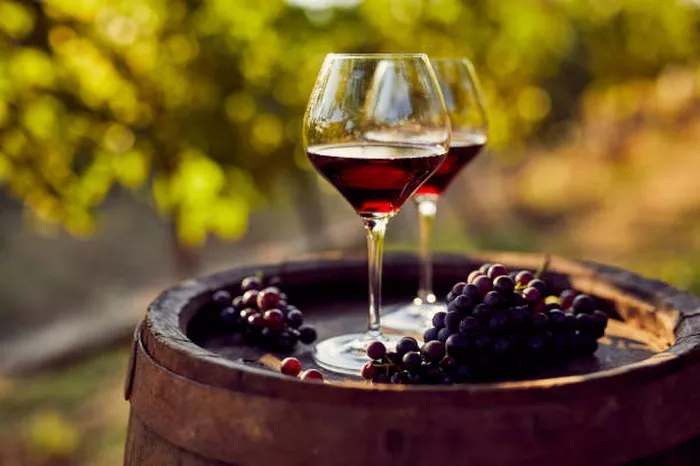Wine enthusiasts and health-conscious individuals alike often ponder over the caloric content of their favorite beverage. Among the vast array of wines available, red wine stands as a popular choice for its rich flavors and potential health benefits. However, a lingering question persists: how many calories are nestled within an average glass of red wine? Delving into this inquiry not only satiates curiosity but also sheds light on the nutritional aspects of this beloved libation.
Understanding the Basics
In unraveling the caloric mystery of red wine, it is essential to first establish a standard measure for what constitutes an average glass. Typically, a standard serving of wine is considered to be 5 ounces (approximately 148 milliliters). Within this modest volume, the caloric content varies depending on several factors, including alcohol content, residual sugar, and specific grape varietals.
Alcohol Content and Caloric Contribution
The primary driver of caloric content in red wine is its alcohol content. Ethanol, the alcohol found in alcoholic beverages, is energy-dense, contributing to the overall caloric load. On average, a single gram of alcohol yields approximately 7 calories. Therefore, wines with higher alcohol by volume (ABV) percentages will inherently possess more calories per serving. Understanding this correlation allows for a more informed assessment of caloric intake.
In considering the alcohol content, it becomes evident that the caloric density of red wine can vary significantly. For instance, a glass of dry red wine with a lower ABV, such as a Pinot Noir or a Beaujolais, may contain fewer calories compared to a full-bodied red like Cabernet Sauvignon or Shiraz, which typically boast higher alcohol levels.
Residual Sugar and Its Impact
Beyond alcohol content, residual sugar content also influences the caloric composition of red wine. Residual sugar refers to the natural grape sugars that remain unfermented during the winemaking process, contributing to the wine’s sweetness. Wines with higher residual sugar levels tend to exhibit a sweeter profile and consequently possess a higher calorie count.
When contemplating how many calories are in an average glass of red wine, it’s essential to recognize that sweeter varieties, such as Port or some Zinfandels, may contain more calories per serving due to their elevated sugar content. Conversely, dry red wines, which undergo fermentation until nearly all sugars are converted into alcohol, generally contain fewer calories per ounce.
Grape Varietals: Unveiling Flavor and Caloric Nuances
The diversity of grape varietals utilized in winemaking further contributes to the nuanced caloric profiles of red wine. Each grape variety imparts distinct flavors, textures, and sugar levels, thereby influencing the overall caloric content of the final product.
For instance, Merlot, known for its plush texture and moderate tannins, typically yields wines with a moderate alcohol content and a balanced sugar-to-acid ratio. As a result, a standard serving of Merlot may contain a moderate number of calories compared to more robust varietals.
Conversely, wines crafted from grapes such as Petite Sirah or Malbec, which tend to produce bolder, higher-alcohol wines, may pack a more significant caloric punch per serving. The inherent characteristics of these varietals often translate to wines with richer body and flavor profiles, accompanied by elevated alcohol levels and, consequently, more calories.
Exploring Serving Sizes: Redefining Moderation
While a standard serving size of red wine is conventionally defined as 5 ounces, it is crucial to acknowledge that serving sizes can vary depending on individual preferences and contexts. Understanding portion sizes is paramount for managing caloric intake and adhering to dietary guidelines.
When contemplating how many calories are in an average glass of red wine, it is pertinent to recognize that portion control plays a pivotal role. Opting for smaller serving sizes or utilizing tools such as wine glasses with marked lines can aid in moderating consumption and maintaining awareness of caloric intake.
Moreover, incorporating mindful drinking practices, such as savoring each sip and pacing consumption, fosters a more enjoyable and health-conscious approach to imbibing red wine. By embracing moderation, individuals can indulge in the pleasures of wine tasting while maintaining balance in their overall dietary habits.
Caloric Considerations: Balancing Enjoyment and Wellness
As consumers navigate the realm of red wine, it is imperative to strike a balance between enjoyment and wellness. While red wine offers sensory delight and potential health benefits, it is essential to remain cognizant of its caloric implications within the broader context of dietary intake.
Engaging in informed decision-making entails not only understanding how many calories are in an average glass of red wine but also considering the cumulative impact of dietary choices. By incorporating red wine into a well-rounded diet that prioritizes nutrient density and moderation, individuals can savor its pleasures while supporting overall health and wellness.
Conclusion: A Palatable Pursuit
In conclusion, the quest to unveil the caloric content of red wine unveils a multifaceted journey encompassing alcohol content, residual sugar, grape varietals, and serving sizes. By deciphering these intricacies, individuals can make informed choices that align with their dietary preferences and health goals.
While the caloric content of red wine may vary depending on factors such as alcohol and sugar levels, embracing moderation and mindfulness enables individuals to enjoy its nuances responsibly. Whether savoring a velvety Merlot or indulging in a robust Cabernet Sauvignon, the pleasures of red wine can be savored in harmony with a balanced lifestyle.
As we raise our glasses to toast the complexities of red wine, let us do so with an appreciation for its sensory richness and a commitment to holistic well-being. In the intersection of enjoyment and wellness lies the essence of a palatable pursuit—one that celebrates the artistry of winemaking while honoring the vitality of mindful consumption.


